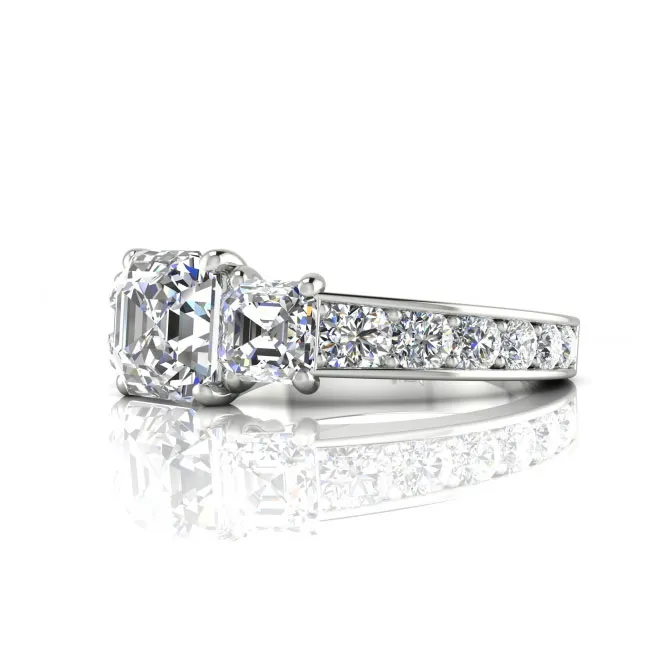Believe it or not, clarity grading a diamond is easier than learning your ABC’s. There are two main categories we want to be concerned with: the diamond with inclusions and blemishes we can see with our own eyes, category I, and those that appear to be “eye clean,” category II. Once we’ve determined which category a diamond falls in, we can break it down into sub-categories.
Category 1: The Imperfects
SI2, I1, I2, I3 (a.k.a., River Rocks, Bluff Diamonds, Commercial Grade and Drill Bit Dodgers)
While the easiest way to determine the clarity grade of a diamond is just to ask the seller, this assumes he’s telling you the truth. But since these four grades are the bottom of the barrel, I’m met very few vendors who will brag about how bad their diamonds are. The vendor is also aware that even if you’re farsighted and they could misrepresent these dogs, it’s not very likely your fiance or independent appraiser will fall into the same trap.
Therefore, if a jeweler tells you your diamond is an SI2, I1, I2 or I3; know you’ve gone as low as you can go. These grades tend to be popular with people who want size over quality. In pictures 1, 2, 3, 4, 5, 6, 7, 8 and 9 you can see some great examples of the “bull in the china shop” kind of damage you can expect to find in these moon rocks.
Category 2: ‘Eye Cleans’
The Investments
Flawless, Internally Flawless, VVS1, VVS2 (a.k.a., Bentleys, Rolls, Safe Deposit Rocks)
When you look at pictures 10A, 10B, 10C and 10D, you’d swear you’re looking at the same diamond, but you’re not! You’re looking at four different round diamonds viewed under 10X magnification. Which one is the Flawless, which one is Internally Flawless and which ones are the VVS?
If all four grades look identical under magnification to the average bear, or are indistinguishable to gemologists without the aid of a loupe or microscope, then don’t worry about it. What makes these rocks distinguishable from the rocks in the first category is their LACK of inclusions, not the presence of any.
The Street Legals – VS1, VS2
Appropriately named due to being the highest grade recommended to wear or mount into jewelry (a.k.a., Mercedes, The Benz, The Lambs [short for Lamborghini]).
This category is my favorite for a variety of reasons; not only are they practically microscope clean and totally “eye clean,” they allow the purchaser to get good to exceptional quality without sacrificing too much on size. In pictures 11A and 11B the diamonds appear flawless, until we zoom in (11C) and easily find pinpoints and small crystals (smaller than a grain of salt) caught in the diamond’s lattice.
The Slights – SI1
Named because they have slight problems but nothing that will effect the beauty. The SI1’s are easy to grade. They always look great to the eye, but the minute you pick up a loupe even a novice can locate the imperfections. Because all the inclusions are typically larger than a grain of salt but small enough to stay under the “eye clean” radar, SI1’s become a popular choice for maximum size but above average quality. In pictures 12A, 12B 12C and 12D we see classic crystals, feathers, abraded girdles and pinpoints one might expect to see in an SI1.
- Inclusions — imperfections inside a diamond (carbon, feather, crystal, pinpoint, cloud)
- Blemishes — imperfection on the outside of a diamond (chip, scratch, fracture, polishing lines)
- Loupe — a small magnifying glass used to view gemstones.
